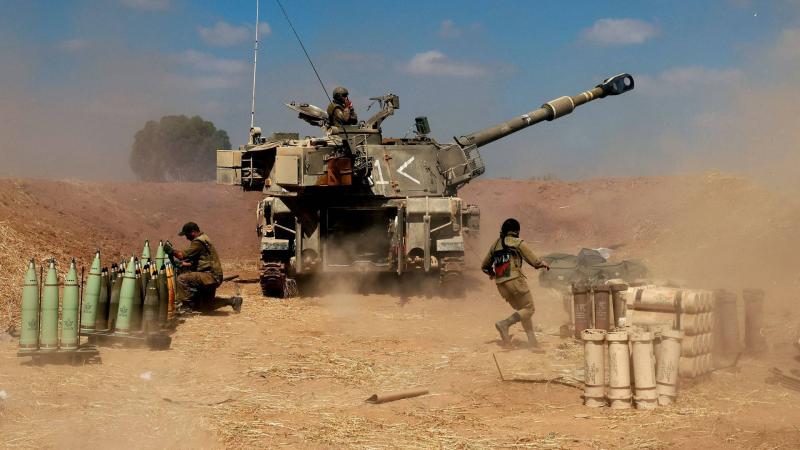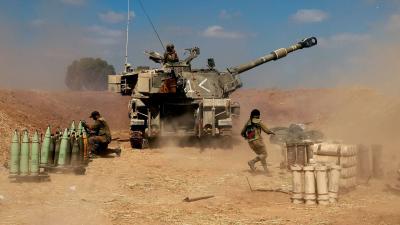The world, particularly the Middle East, witnessed a serious security escalation last month due to the ongoing conflict between Hamas and Israel, which began on October 7. This escalation carries long-term repercussions for the global economy, especially with the rising prices of energy, particularly oil, and a significant increase in European gas prices. Prior to this crisis, there were concerns about rising prices due to expectations of a cold winter. Therefore, this article will discuss the potential consequences of this conflict on the global economy and the necessity for international cooperation to mitigate its impact.
**Economic Consequences in General:**
1. **Increasing Energy Prices:**
The conflict has led to a $20 per barrel increase in oil prices, significantly impacting countries that rely heavily on petroleum in their industries. This has raised concerns about inflation, as higher energy costs spread across various sectors of the economy.
2. **Threat of Energy Shortages:**
In addition to rising prices, there is a future threat of energy shortages. If the conflict continues and affects energy production in key areas, or if transportation routes for energy resources are cut off, global oil and gas supplies could be significantly impacted, leading to further price increases and a potential supply shortage.
3. **Fears of Stagflation:**
The current situation may ignite fears of stagflation, a serious economic state characterized by stagnant growth and rising inflation. The lack of funds due to unemployment can contribute to economic slowdown, worsening this condition.
**Impact on the Middle East Region:**
While rising oil and gas prices benefit oil-producing and exporting Middle Eastern countries by increasing revenues and reducing deficits, it also comes with a set of challenges during crises. Ongoing conflicts in the region lead to inflation, particularly in transportation costs, and create an unfavorable investment environment. Practically, this situation results in capital flight to safer areas, away from conflict zones and their surroundings. Furthermore, regional currency values diminish, making investment opportunities that promote growth and development rare. Although it may be too early to predict precise details, recent indicators raise alarms about the economic risks facing the Middle East due to the nature of the long-standing conflict.
Thus, the economy in the Middle East could pay a heavy price if the conflict escalates and spreads beyond the Gaza Strip. This could damage fuel and gas supplies, leading to significant inflationary pressures, especially since there was already a shock in energy prices due to the Russia conflict and now with the situation in Gaza, significantly affecting current food prices and other high-cost products. Demand may also decline, subsequently harming producing companies, which is a situation the market cannot tolerate.
**Impact on the European Economy:**
The repercussions of rising energy prices are emerging as concerning for European economies. Inflation rates are increasing; a quick glance back before the current conflict shows that, according to Eurostat data, inflation rates in the Eurozone dropped from 8.6% in 2022 to 5.5% this year, and from 9.6% to 6.4% in the EU by June 2023. The lowest recorded inflation rate in Europe was in Luxembourg at 1%, closely followed by Belgium and Spain at 1.6%. Conversely, the highest inflation rates were recorded in Hungary at 19.9%, followed by Slovakia at 11.3% and the Czech Republic at 11.2%. In the United Kingdom, inflation fell at a slower pace compared to other industrialized countries, decreasing from 11.1% in 2022 to 6.7% last month. I anticipate that these figures will return with the first quarter of next year, just four months after the conflict began. Thus, I believe this war will create stagflation in Europe, which is far more serious than normal recession, typically leading to price reductions due to decreased demand for goods primarily caused by the lack of money generated by unemployment due to economic slowdown.
**Global Economic Stability:**
Countries are already suffering from unusually high levels of debt and increasing borrowing costs while interest rates have reached their highest levels in nearly 20 years in the United States. Additionally, private sector investments continue to face setbacks, and there is significant slowdown in global trade, making the war and its costs come at a challenging time when the world is already struggling.
It is the first time the global economy faces two simultaneous energy shocks—one from Ukraine and another from the Middle East concerning oil and gas prices. These price increases not only reduce purchasing power for households and businesses but also lead to higher food production costs, exacerbating already high levels of food insecurity, particularly in developing countries. Therefore, the current conflict highlights the fragile nature of the global economy, which will depend on the extent of the escalation. If the conflict remains limited in scope, its impacts will be contained; however, if it escalates, oil prices could reach $150 per barrel or more.
**Conclusion:**
The conflict in the Middle East poses a significant threat to the global economy, not only through rising energy prices but also by raising the specter of energy shortages. There must be substantial international cooperation to stop the war in Gaza and prevent further economic disruptions, as the consequences will be catastrophic for all. The need for stability, peace, and global cooperation has become an urgent necessity for the world to unite and find a radical solution to this crisis before the situation explodes and the conflict spreads further.




